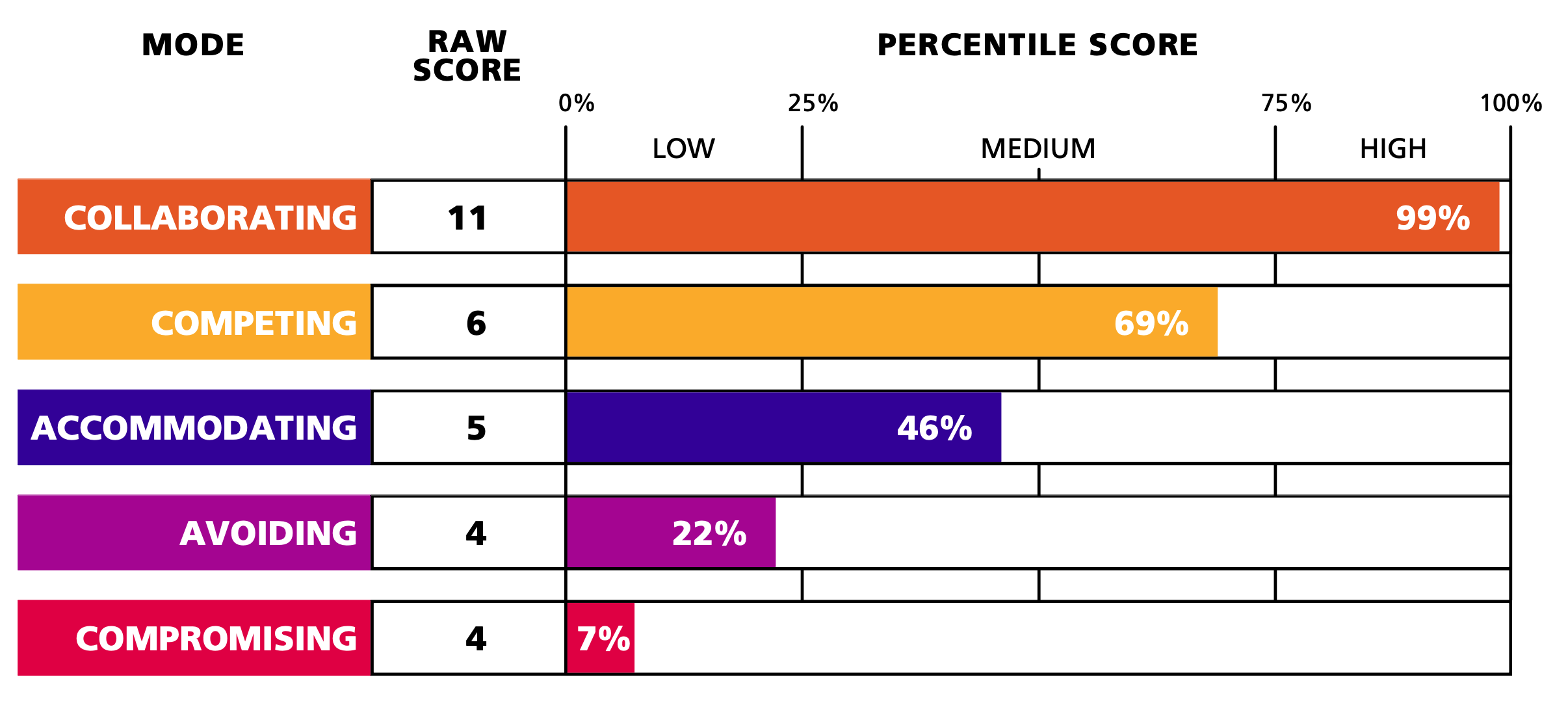08 Apr Moving Beyond the TKI to Effective Behavior
Ralph H. Kilmann, co-author of the Thomas-Kilmann Instrument (TKI)
Below are FIVE STEPS that will help you gain the most knowledge and skills from taking and interpreting your TKI results and then improving your conflict-handling behavior across a variety of situations, at work and at home.

Step One: The immediate benefit of taking the TKI and reviewing your results (which includes a personalized report with the online version of the assessment) is AWARENESS: You learn which conflict modes you might be using too much (usually out of habit) and which ones you might be using too little (since you have not been exposed to the many positive uses of your underutilized modes). Although gaining awareness is the decisive Step One, four additional steps must be taken to improve how you actually BEHAVE in conflict situations — so you and other people will be more satisfied and your organization will be more successful.

Step Two is sharing your TKI results in a small group (family members or work associates) and hearing what others have to say about THEIR results as well as how they experience YOUR behavior in conflict situations. So long as the discussion remains supportive and is backed by a healthy culture, you will gain additional awareness as well as receive specific feedback about how you use one or more modes in different situations.

Step Three is to learn the eight key attributes of a conflict situation that determine which modes work best under what conditions. This step is learning to assess a situation in terms of (1) the level of stress (overwhelming or stimulating); (2) the complexity of the conflict (one-dimensional or multidimensional); (3) the relative importance of the conflict to each person (high/low, equal/different); (4) the available time to discuss the conflict (very little, moderate, or much); (5) the level of trust among the relevant persons (high, medium, or low); (6) the quality of speaking and listening skills (supportive/active versus defensive-producing/pseudo); (7) the group or organizational culture (protective and political versus open and honest); and (8) the importance of the relationship (high, medium, or low). Through a mini-lecture, group discussion, and practice, people can easily learn to read a conflict situation in order to choose which mode to use at first — and how to switch from one mode to another, as the situation changes.
Step Four is to practice, practice, practice…using each mode effectively. If you choose to avoid, how do you do that in a manner that respects and honors the other people in the situation? If you choose to compete, how do you get your way in a manner that engenders trust, respect, and a supportive culture (assuming you want those relationships to last)? How do you compromise so the door stays open for collaboration in the future, especially if the topic becomes more important to both of you? Thus, it is one thing to know how to choose the theoretically best mode in a given situation, but it is quite another to enact it effectively, efficiently, and with dignity. Typically, role playing a number of conflict situations and getting feedback from others (in a supportive group) will help you learn how to use each mode to its full potential.
Step Five is to keep improving how you read the key attributes of a conflict situation, how you choose and enact different conflict modes, and how you can engender more trust and supportive communication in both your personal life and work life.
Kilmann Diagnostics offers a series of eleven recorded online courses and nine assessment tools on the four timeless topics: conflict management, change management, consciousness, and transformation. By taking these courses and passing the Final Exams, you can earn your Certification in Conflict and Change Management with the Thomas-Kilmann Instrument (TKI). For the most up-to-date and comprehensive discussion of Dr. Kilmann’s theories and methods, see his 2021 Legacy Book: Creating a Quantum Organization: The Whys & Hows of Implementing Eight Tracks for Long-term success.




